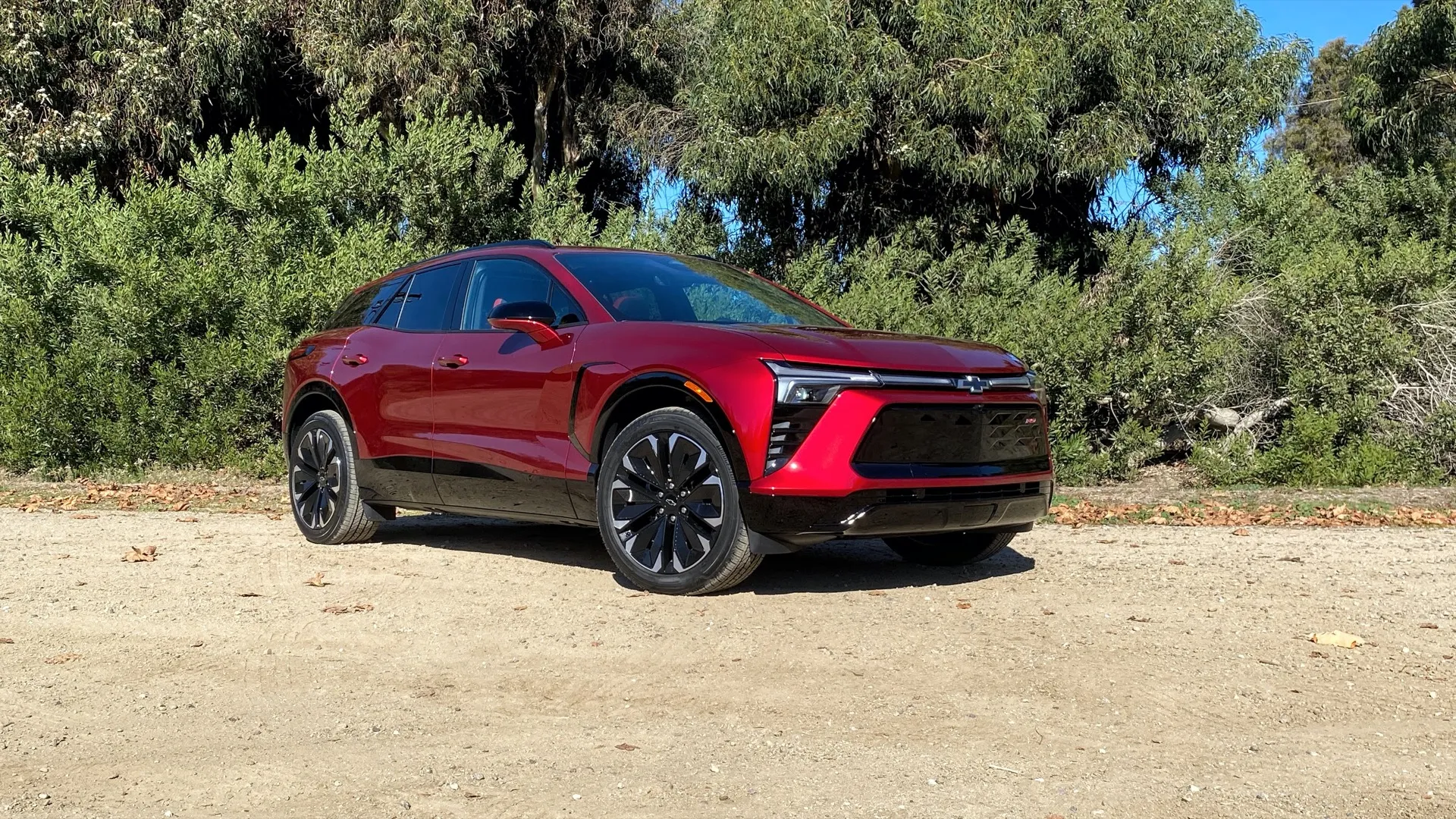The 2024 Chevy Blazer EV is different.
That’s because compared to the Ford Mustang Mach-E, the Hyundai Ioniq 5, the Kia EV6, the Volkswagen ID.4, and various others—anything you might compare it to directly—the Blazer EV is primarily a U.S.-bound product, conceived specifically with the U.S. in mind.
After spending a few hours in and around the 2024 Chevrolet Blazer EV last week, I left with the feeling that while it doesn’t blaze a new trail for EVs, it’s very much tuned into the rigors of American driving—and it has many of the elements that should do well with Americans.
Most notably, those elements are very strong real-world range, an interface that’s ready, out-of-the-box, to nudge drivers about where to charge, and a layout that feels familiar…yet different.
It’s that latter point that had me initially questioning the Blazer EV. GM could have gone with an instrument-panel layout that felt like an evolution of the one in the Bolt EV (or Volt). Or it could have embraced the tech and gone minimalist.
2024 Chevrolet Blazer EV RS

2024 Chevrolet Blazer EV

2024 Chevrolet Blazer EV
Instead it embraced a layout that feels over-the-top Camaro-influenced and cluttered with clouded metallic bezels at first look, for this mass-market model—an anti-Tesla in some ways—and the more you look around, the more you realize that things actually are very different.
For instance, turning the vehicle off, placing it in accessory mode, toggling one-pedal driving, or turning the lights on are all accomplished with virtual screen-based buttons below the volume knob and in the leftmost portion of the infotainment screen—in a spot that, for me, is obscured by the shift stalk and steering-wheel rim.
And yet some things are refreshing about the Blazer EV, like its normal door handles. You don’t have to learn a new interface for walking up to the car; just get in.
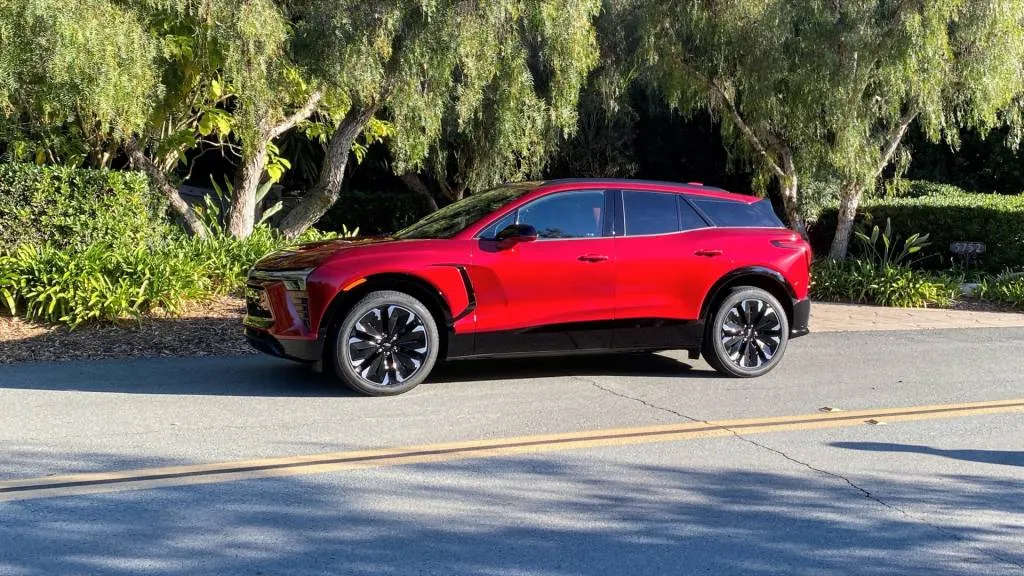
2024 Chevrolet Blazer EV
Blazer EV is a warmup act from ICE
Give it a little bit of time and it gets better. The instrument panel can be toggled between several layouts, including one in which the navigation map makes up the majority of it. The available head-up display can replace screen time if you want. And there are lots of physical switches, buttons, and redundancy.
The RS models GM had us test really, really put our garish sensibilities to the test, too. My test cars, both in Radiant Red tintcoat exterior and black/Adrenaline Red interior, felt more like the combination you might order for a weekend plaything.
There might be a whole lot of Camaro baked into the interior of the Blazer EV, but it just looks like a better Blazer on the outside. It one-ups its ICE namesake with more voluptuous surfacing, a stronger stance, and a more appealing silhouette—and on the test RS models, a lightbar that activates on approach and exit, maybe channeling Knight Rider’s KITT.
Remember when GM said that it was all-in on EVs? Revealed its large Ultium pouch cells as the key to that shift? Detailed its leading-edge wireless battery management and new EV motor suite?
Time with the Blazer EV served as a reminder that GM is on the right track, and these products can and will be very good.
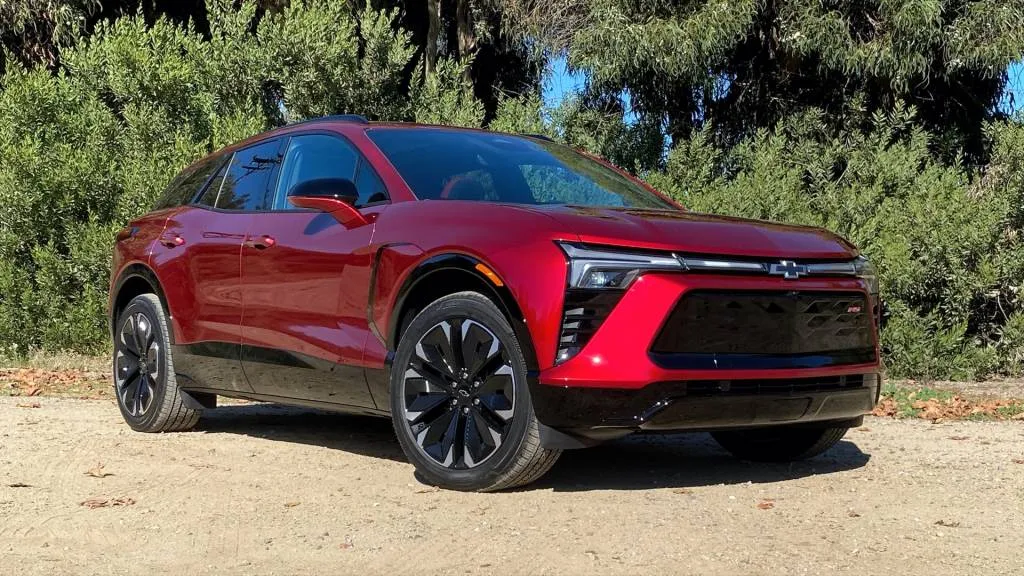
2024 Chevrolet Blazer EV
Chevy Blazer EV lineup: Too much for its own good?
But first, it seems, there’s a vast array of versions to navigate. GM plans to offer the Blazer EV in front-wheel drive, rear-wheel drive, and all-wheel drive layouts, with 85-kwh and 102-kwh battery packs, expressed in LT, RS, and SS trims.
To whittle this lineup down a little bit: The SS, which won’t be out until around next summer, will offer a eak 557 hp and 648 lb-ft of torque when enabling its Wide Open Watts performance mode—enough to provide 0-60 mph acceleration in under four seconds. And without the $45k base model in the lineup, it now starts with the front-wheel-drive Blazer EV 2LT, which hasn’t yet been priced.
The all-wheel-drive Blazer EV 2LT has been priced, at $56,715, and so has the RS AWD, at $60,215, while the RS rear-wheel drive, at $61,790, costs more than the AWD. That’s because the RS AWD and SS are the two versions in the lineup to get a larger 102-kwh battery pack, while others in the lineup get an 85-kwh pack.
I briefly drove the RS RWD, carrying an EPA range rating of 324 miles, then I spent a morning with the RS AWD, offering 279 miles of EPA range—in other words, a single-motor with the larger pack and a dual-motor with the smaller pack, but with similar wheels, tires, and equipment. While we’re still waiting for a trim-by-trim spec panel, both models should land at a curb weight below 5,500 pounds.
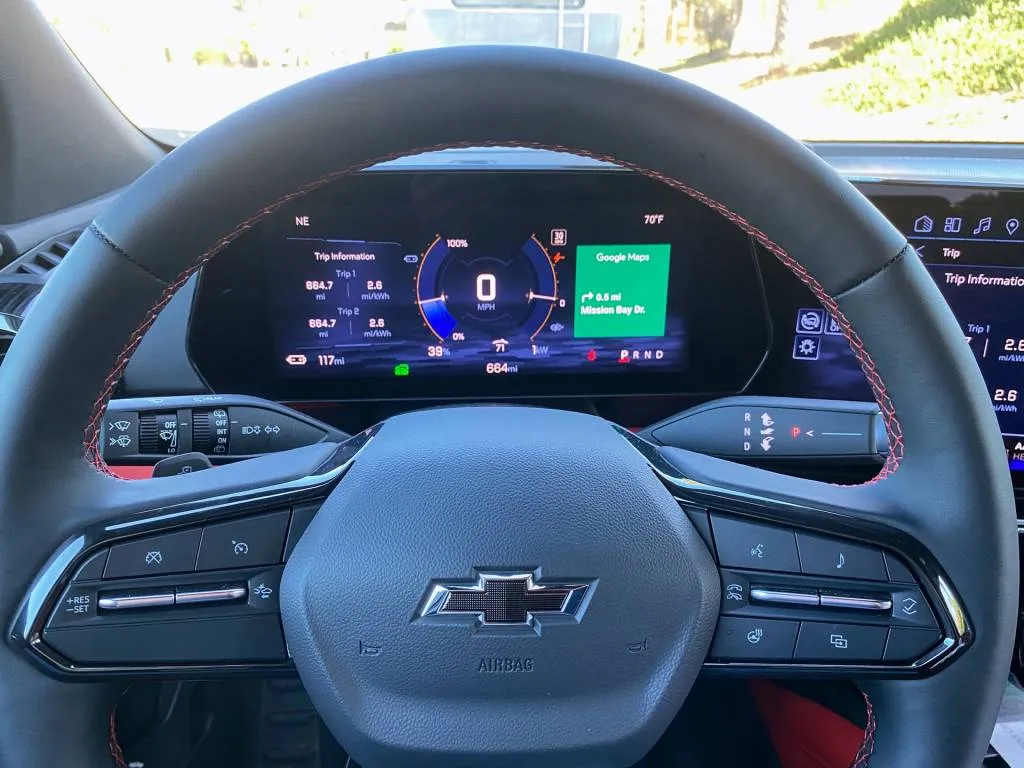
2024 Chevrolet Blazer EV
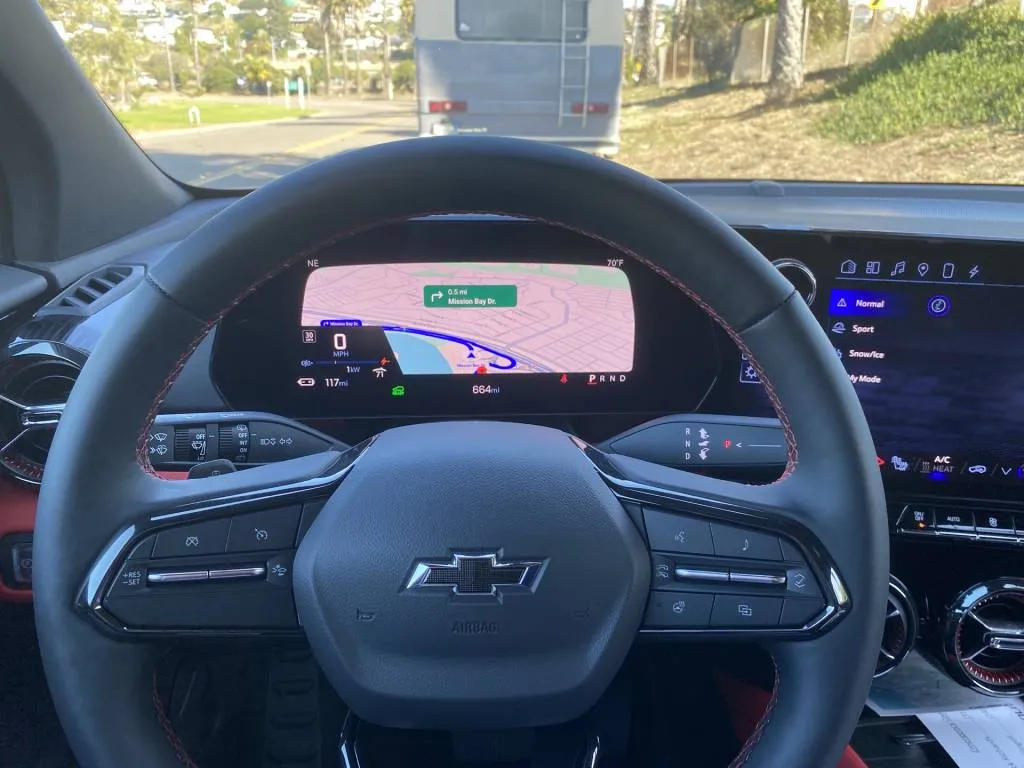
2024 Chevrolet Blazer EV
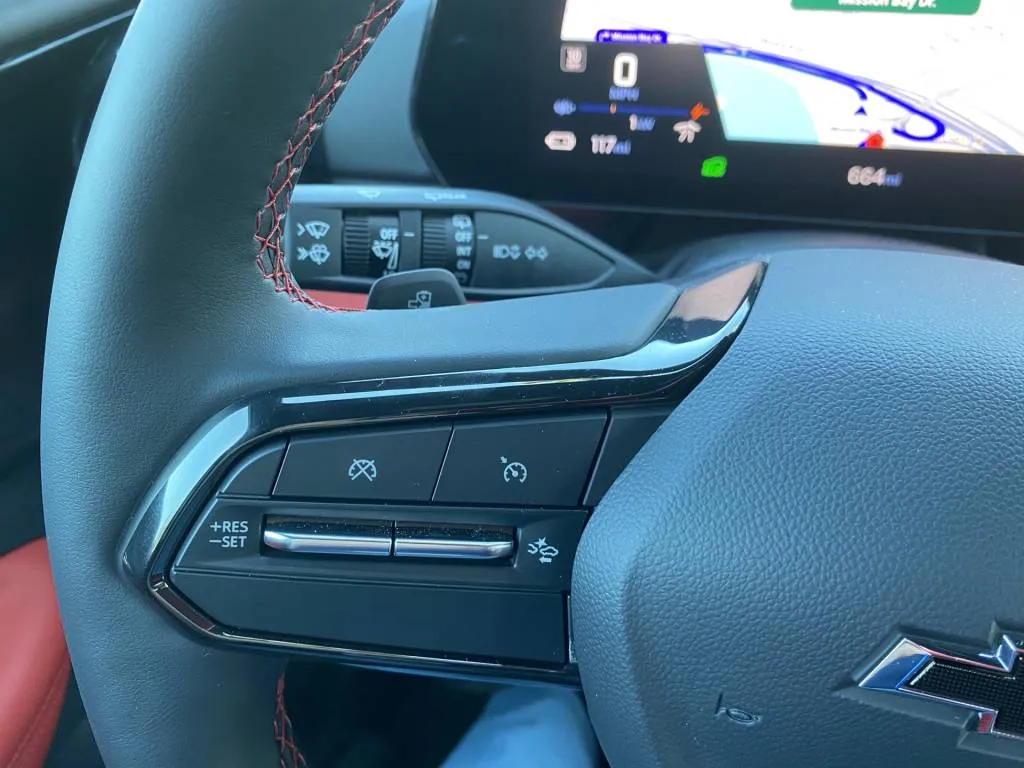
2024 Chevrolet Blazer EV
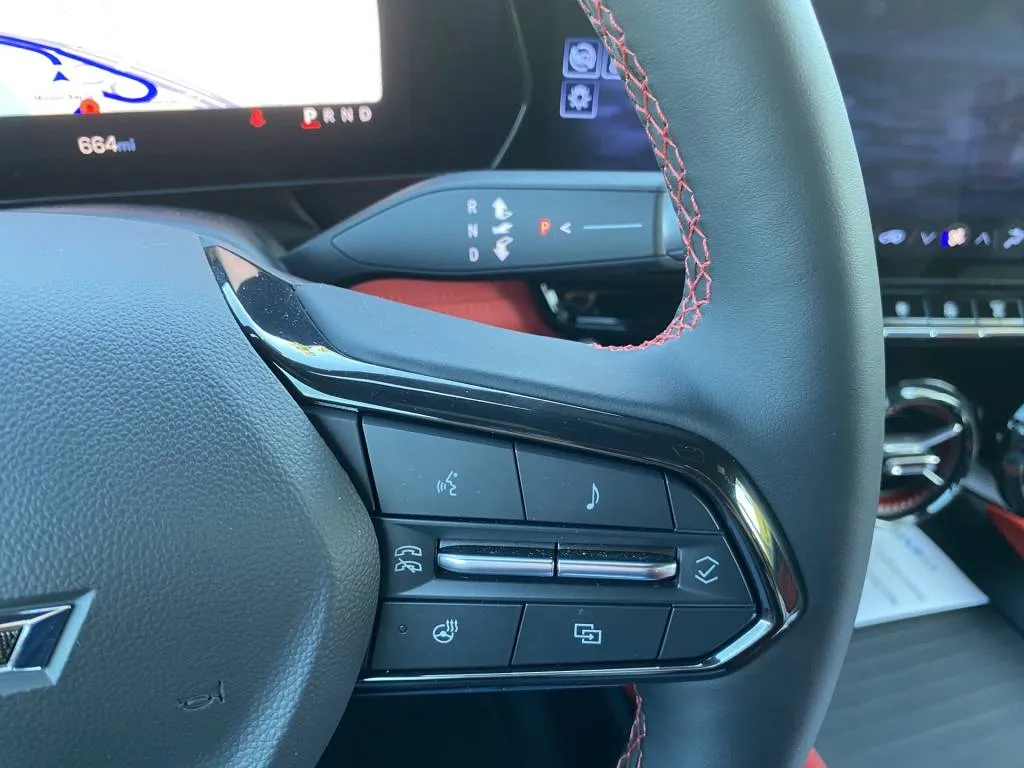
2024 Chevrolet Blazer EV
To cut to the chase: I saw very close to 3.0 miles per kwh in a range of driving conditions in both versions of the Blazer EV—all in warm 70-degree San Diego weather, but paying no heed to efficiency and aiming to understand its dynamics.
That said, just pulling the shifter back and down for Drive brings with it a slight amount of brake regen—definitely more deceleration than your typical gasoline vehicle but nothing close to the ramped-up regen some EVs have baked-in. With a screen button you can engage one-pedal driving, suddenly rolling in way more regenerative behavior from the motors and prompting you on the screen briefly to choose from normal or max levels. What’s missing, I concluded after some hours with the Blazer, is something in the middle; there’s neither a ‘B’ mode with a little more braking nor a mode that allows true coasting.
The rear-wheel-drive RS was definitely my dynamic favorite of the two I drove, as the way the vehicle was calibrated, it took a set much more easily in corners.
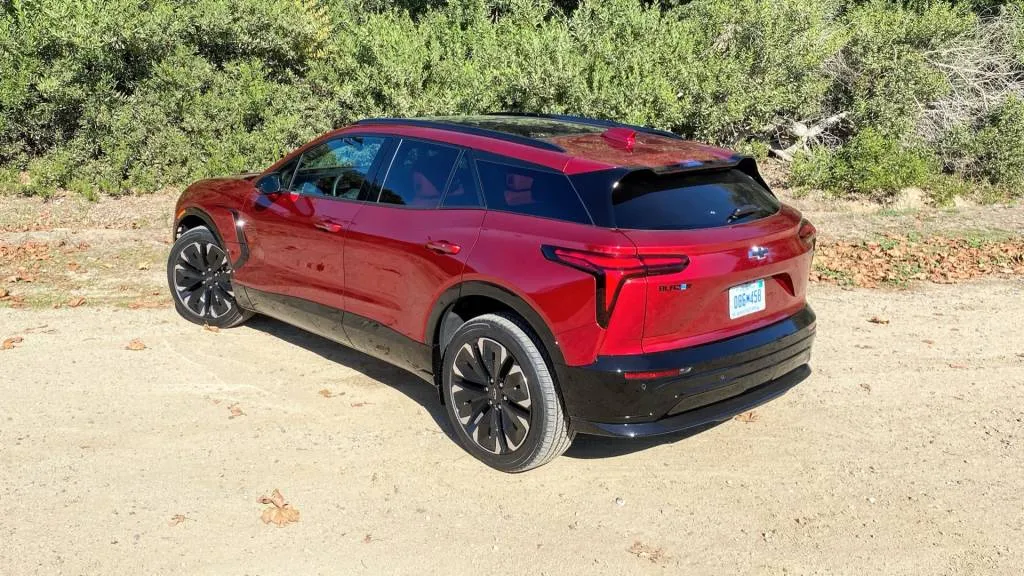
2024 Chevrolet Blazer EV
This EV’s not a lightweight or a hotshoe
A first impression was that the Blazer feels heavy in corners and doesn’t have the light feel that some other two-row crossovers this size have. Compared to the Mach-E, Ioniq 5, and others, the Blazer EV just feels a little more grown-up and substantial, for better or worse.
There’s some merit to the observation. The Blazer EV is big, and it’s a step larger than most other two-row SUVs you might compare it to. At about 192 inches long, and built on a long wheelbase almost 122 inches, it’s sized like the Jeep Grand Cherokee or Honda Passport—or, for that matter, the gasoline version of the Blazer.
The Blazer EV’s packaging is impressive, but at least on the surface it doesn’t take advantage of all the nooks and crannies that a skateboard platform permits. The rear seats fold forward nearly flat—and essentially flat when you put some weight on them. The liftgate opening is huge, the liftover height is low, and there’s a little extra stow space under the cargo floor. But pop the hood and there’s no frunk. It’s also unclear, inside, what’s under the forward-most portion of the center console.
I spent far more time in the all-wheel-drive RS, which employs a permanent-magnet motor at the front wheels plus a lower-power induction motor at the rear wheels. This version was less straightforward to drive rapidly and simply didn’t feel inspiring on the mountain-and-canyon route GM had set aside. The Blazer EV’s short and unsupportive front seats and rather high seating point amplified the impression—even though the RS’s 21-inch Bridgestone Alenza tires and their stiff sidewalls provided a firm base.
Back in San Diego traffic, I again appreciated what GM has perfected in the Blazer EV. It’s inherited from the Bolt EV (and Volt, and Spark EV) some core EV attributes that are really impressive—the expert-level smoothness of its powertrain, and the linearity and precision to its accelerator inputs. Further, the brake blending between regenerative (motor) braking and the friction pads shifts over to a secure, predictable pedal feel.
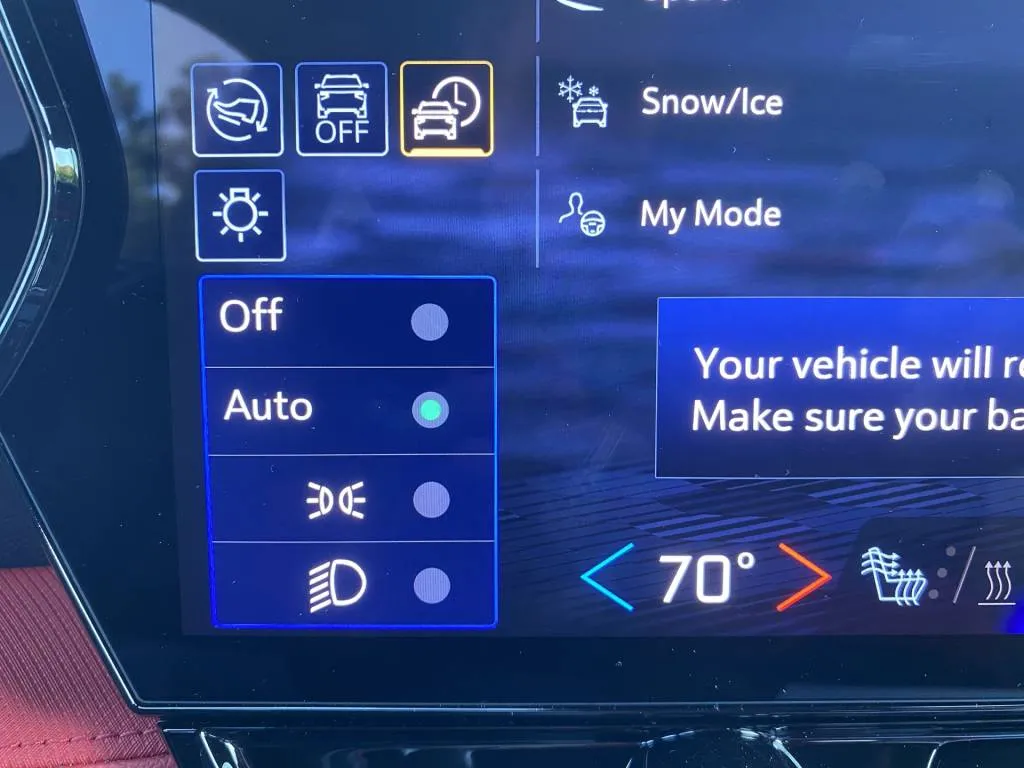
2024 Chevrolet Blazer EV
From Volt to Bolt to Blazer, what GM has mastered
If you hold the regen paddle for more than a second or so at a stoplight, an auto-hold light blinks on the dash and the Blazer EV holds firm until you lightly press the accelerator to go.
Through the infotainment screen you can select a range of vehicle modes, including a snow/ice mode and a Sport mode, which ramps up the responsiveness of steering and accelerator inputs only slightly. The most noteworthy thing that happens in Sport mode is audible; a lower-pitched induction-whistle sound gets supplemented through cabin speakers. Fortunately you can decide which of each item you want and come up with a My Mode.
The infotainment system itself is a big deal. This is very close to what GM is rolling out to its other gasoline models, but with EV-specific features added, and a key point of differentiation: This is the first that does away with Apple CarPlay and Android Auto compatibility.
GM has built the interface on the Android Automotive operating system, but with “Google Built-in,” it walls off Google Maps, Google Play Store, and the Google Play Store as native apps running on the vehicle.
According to Ryan Buffa, GM’s manager for digital business strategy, there’s always lag when phones are projecting apps, and vehicle settings for details like the state of charge or remaining range aren’t integrated, so Google Built-In offers an all-in-one interface that doesn’t require the back-and-forth.
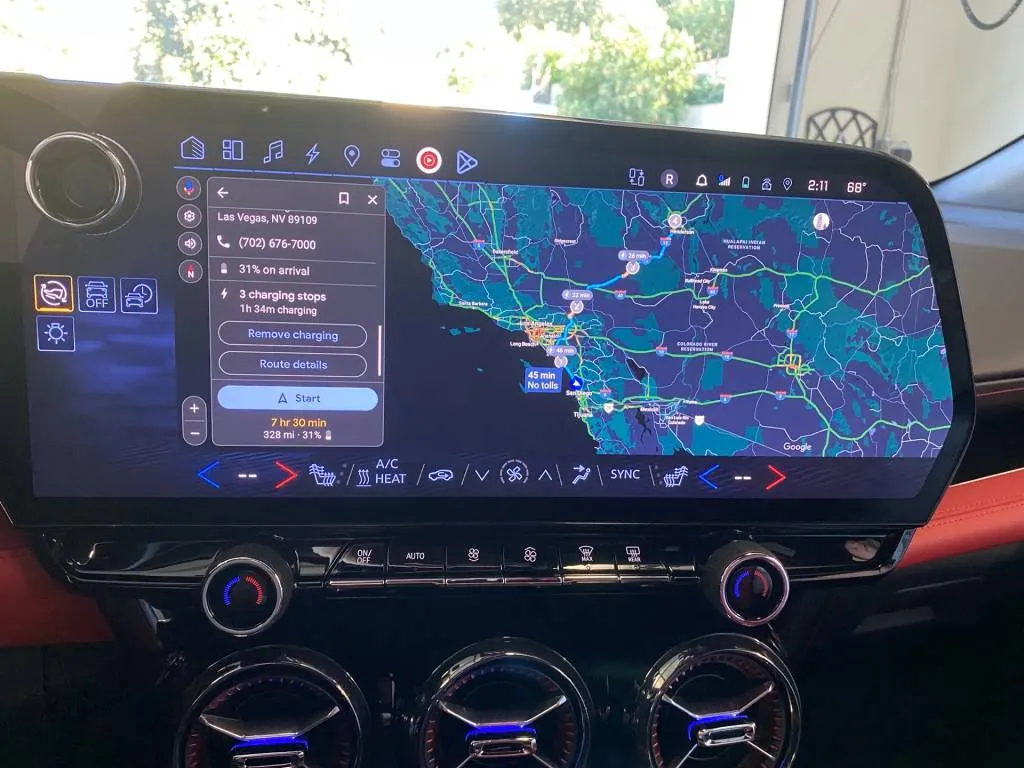
2024 Chevrolet Blazer EV
Charge preconditioning, route planning: Yes, built-in
What this means is that EV route planning, based on some test destinations, looked ready to go here, with suggested charge points along the way. Buffa verified that it does tap into information about the power level of each station along the way in its calculation.
Separately, GM has added two ways to initiate preconditioning (warming up the battery for its peak fast-charging rate): automatically through route planning, or via a standalone button on the interface.
The Blazer EV’s route planning also will from the outset include an allowance to prioritize roads mapped for Super Cruise—so you can combine that with the needs for charging along the way.
It will fast-charge at up to 190 kw for the larger pack and up to 150 kw for the smaller one. That translates to up to about 78 miles back in 10 minutes with the larger pack according to the automaker. The charge port is located at the front fender, and yes, it’s a CCS port for now.

2024 Chevrolet Blazer EV
Blazer EV: Heat pump, bidirectional charging, it’s all there
GM said that all of its Ultium EVs would have a range-boosting heat pump system that will help in cold weather. It also promised bidirectional charging hardware, and it’s all here. The company says that a GM Energy system arriving next year will allow up to 9.6 kw to flow from the Blazer EV toward home backup. It can charge at up to 11.5 kw.
The Chevy Blazer EV is good. But it’s a challenge to make any kind of argument for the RS models I drove, as they’re priced directly over the $58,590 Cadillac Lyriq, which is closely related and superior in everyday ride and handling, is quieter inside, and has better seats.
The upcoming $34,995 Chevy Equinox EV and Honda Prologue promise some inside competition, too—and they’ll both be made at the same plant in Mexico as the Blazer EV.
It’s partly that lack of direct rivals—or that other rivals are ICE or luxury—that suggests GM may have landed in the right market spot with the Blazer EV. Now scaling up sales and availability of it, or any of these genuinely competitive EVs can’t come soon enough.
Read the full article here


